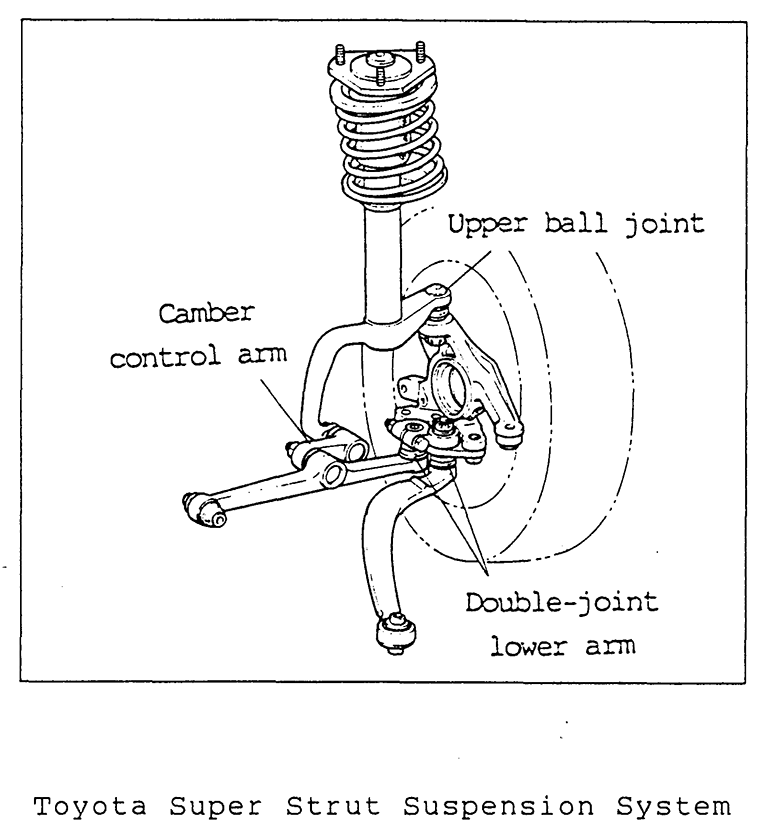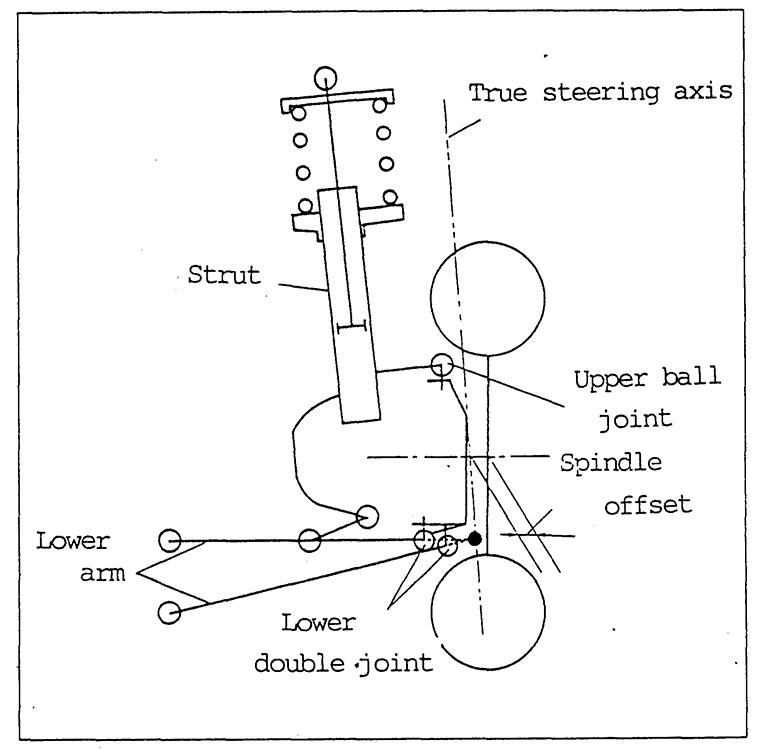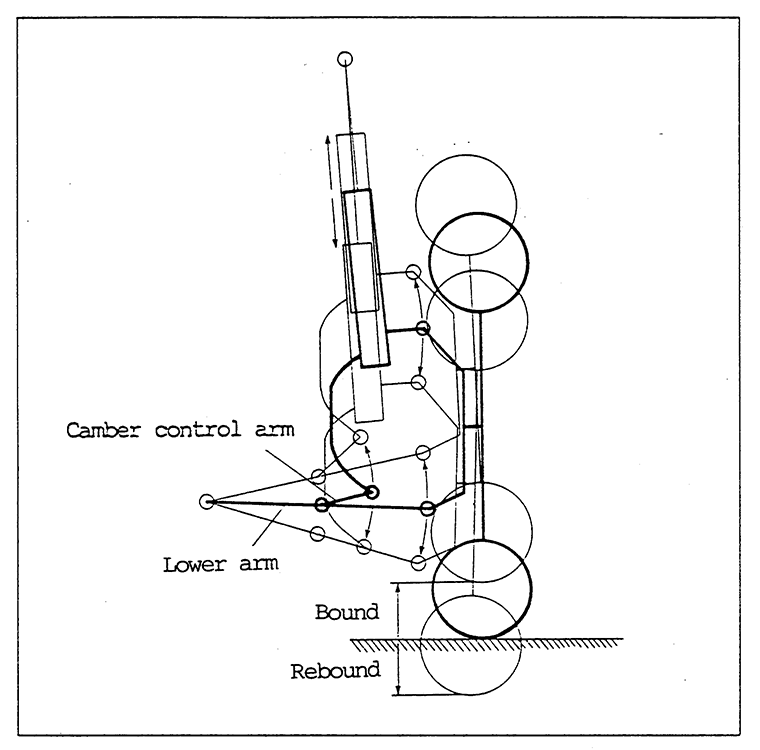Apr. 05, 1991
TOYOTA DEVELOPS NEW FRONT-END SUSPENSION SYSTEM
Toyota City―TOYOTA MOTOR CORPORATION today announced that it has developed a new front suspension system for front-engine, front-wheel drive cars that greatly enhances vehicle performance in high-speed straight-line driving, turning, lane-changing, and emergency maneuvering.
The Super Strut Suspension System is based on existing strut-type suspension design, but boasts an innovative link configuration and newly designed camber control arm for finer wheel-alignment control.

Functional Features
- Reduced moment of inertia around steering axisThe addition of an upper ball joint and double-joint lower arm creates a true steering axis, which achieves a dramatic reduction in spindle offset―the distance between the steering axis and the center of the tire. As a result, angular impulse around the steering axis due to drive power is reduced, and both steering torque and tangential vibration on the steering wheel are markedly lower, dramatically improving high-speed straight-line stability.

The double-joint design of the lower arm and upper ball joint of the strut enables the steering axis, to be as close to the tire center as possible while maintaining the axis at an optimal angle.
- Reduced camber angle relative to groundA new camber control arm and upper ball joint help reduce camber angle (the angle between the ground and the tire-center surface), resulting in improved tire performance in turning, lane-changing, and emergency maneuvering.

The camber control arm and upper ball joint enable greater control of the camber angle in response to vertical tire movement, as well as improving tire performance.




